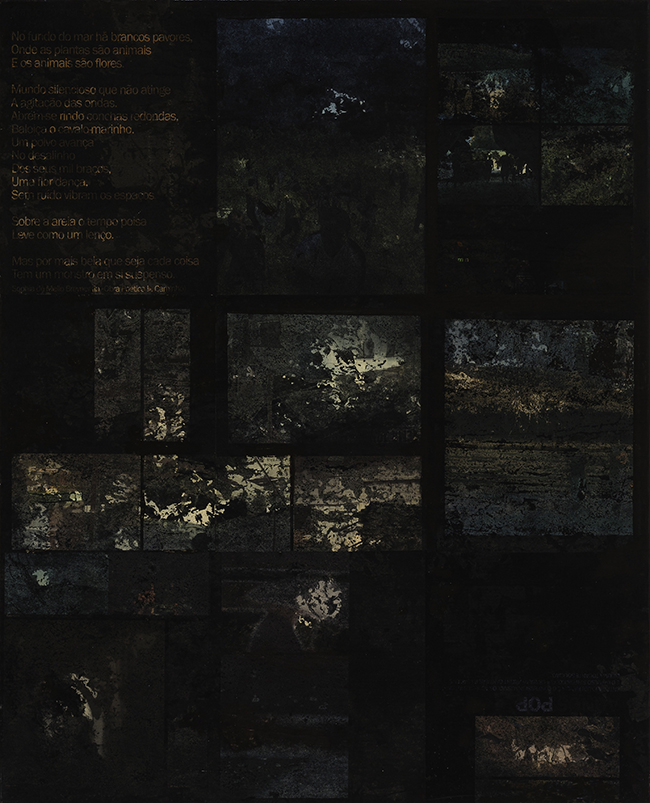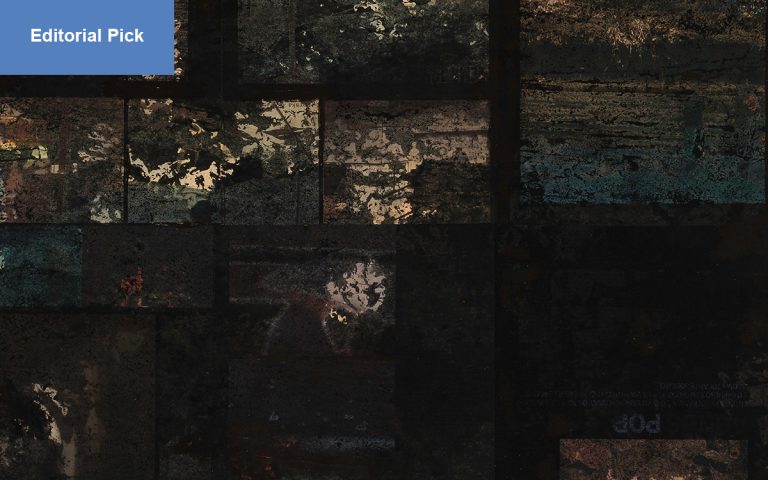José Brito doesn’t paint to decorate a wall. He paints to wrestle with the world. His canvases don’t whisper or sit politely in the background—they demand attention. With heavy black ink, glued fragments of newspaper, and restless energy, his paintings carry the feeling of urgency, as though they’ve been waiting decades to break through the surface. His work is less about calm contemplation and more about confrontation—about facing the chaos of modern life head-on. Standing before a Brito canvas isn’t like admiring an object of beauty; it’s closer to being pulled into a vortex of ideas, fragments, and histories all layered at once. Each piece feels like a dialogue that refuses to resolve neatly. Brito doesn’t offer easy answers, but he insists we wrestle with the same disorder that fuels his practice.

The Work
“C’est fou ce que le monde est beau” (“It’s crazy how beautiful the world is”)—a phrase lifted from philosopher Yves Michaud—sets the stage for reflecting on José Brito’s work. Michaud argues that contemporary art has lost much of its transformative power, reduced instead to fleeting experiences and sensations. He asks: how can we preserve the traces of those experiences once they pass? His irony toward the modern obsession with beauty—plastic surgery, consumer design, tattoos, curated aesthetics—feels relevant when considering Brito. For Brito, beauty isn’t the goal. His canvases live in tension with it.
Brito’s chosen material—newspaper clippings—speaks volumes. Newsprint is everyday, disposable, and fleeting. It carries the voices of the world: headlines, gossip, ads, and commentary. By pasting these fragments onto his canvases, Brito captures a snapshot of chaos, the clutter of modern communication. But he doesn’t stop there. Over this layered ground, he applies bold sweeps of black paint. Sometimes it obscures completely. Other times, it veils and partially reveals the words beneath. In doing so, he doesn’t simply silence those voices—he transforms them into another language.
The gesture is both destructive and constructive. Newspapers aim to inform, but Brito treats them as raw material to question their authority. In his hands, information becomes texture. Chaos becomes rhythm. The work is less about transmitting facts and more about making us confront how information shapes us.
There is also poetry in the process. Brito reorganizes the clutter of newsprint into something strangely coherent. His paintings may appear chaotic at first glance, but the rhythm of black against white, the layering of fragments, creates a visual structure. This is where his sensitivity as an artist shows: he knows how far to obscure, how much to leave visible, how to balance silence and noise.
One might think of Fernando Pessoa’s short poem “Pobre Velha Música!…,” in which the poet reflects on hearing an old tune and being overwhelmed by memory and longing. Like Pessoa, Brito taps into something already ephemeral—the fleeting images and words of a newspaper—and builds from it an echo, a reminder that even what slips away carries weight.
In this sense, his art doesn’t aim to be timeless in the traditional sense. It doesn’t try to stand apart from history or float above the present moment. Instead, it plunges into it. Each piece is anchored to the raw material of its time—the day’s headlines, the paper’s fragility, the urgency of newsprint ink. Yet through his layering and reworking, Brito turns this ephemeral matter into something that resists vanishing.
His style is rigorous. He doesn’t make concessions to prettiness or commercial taste. Instead, his work insists on honesty, on reflecting a world that is disordered and conflicted. That’s not to say it lacks beauty, but the beauty is hard-won. It comes through in the rhythm of contrasts, the play of shadow and revelation, the pulse of black against fragments of language.
Seen this way, José Brito Santos is less concerned with decoration and more with testimony. His canvases testify to a world drowning in words and images, where truth is slippery and chaos reigns. But rather than despair, he creates art that holds that chaos together—art that transforms disorder into a kind of visual poetry. His work challenges us to look harder, to feel the weight of the fragments that make up our shared present, and to recognize in them both the noise and the possibility of coherence.
Brito paints not to reassure us, but to confront us. His art is, in the end, an insistence that even in the midst of disorder, we must keep searching for meaning.

